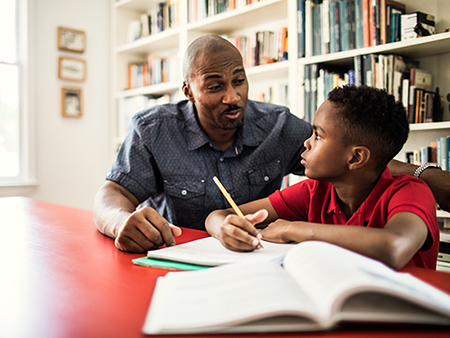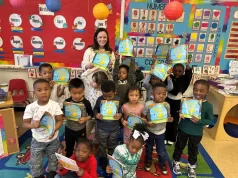By Yvonne Taunton
UAB News
Your child is out for the remainder of the school year — now what?
In order to keep kids’ health and safety a top priority because of COVID-19, schools have closed and are transitioning to distance learning platforms. This can be a hard adjustment for most parents because they still must work and take care of the home, and are now standing in as their child’s temporary teacher.
The best way for parents to continue their children’s education is to develop a plan that will still allow normalcy for everyone involved.
Carla Marchant, visiting instructor in curriculum and instruction at the University of Alabama at Birmingham, suggests asking your child what they are interested in. Is there something they would like to learn more about? This will get them engaged and excited.
“Have windows of learning time, especially if your child is resistant to reading time, math time, etc.,” Marchant said. “Instead of parents’ thinking they need to create what they think school should look like, think nontraditional school.”
Plan a meal or bake cookies
“So much learning content can be tied to everyday things we do, and we can make it enjoyable,” Marchant said. “Following recipes and measuring leads to conversations, for instance if we need to double or halve a recipe — addition and subtraction. Telling time for baking or cooking —elapsed time; create your own recipe based on what you have and what you like.”
Keep a family journal
Marchant suggests taking turns being the designated writer; change it up from journaling to a make-believe story — mixing in the facts.
Incorporate household responsibilities
“Folding laundry, cleaning the floors, picking up with a different type of music playing in the background and DANCE: Time yourself. How long does it take? … Compare to the next time you fold a load of laundry,” Marchant said.
Play card games/dominoes
There are tons of ideas online depending on the child’s age: addition war, multiplication war, fractions, etc.
Read and listen to audio books
Marchant says authors are sharing their literature all over the internet.
Kristi Menear, Ph.D., professor in the School of Education and director of the Office of Research, Grants and Faculty Development at UAB, recommends relying on physical and mental activities.
“Provide children with opportunities to move inside and outside multiple times a day,” Menear said. “Vary the length of physical activity times, especially if they are also working on other school subjects.
Menear says to foster creativity by suggesting children come up with their own “homemade” physical activity equipment. Parents might initially provide them with empty plastic bottles of various sizes, cardboard boxes, a timer, or old/forgotten toys and equipment.
In addition, Menear says, for physical education for children with Individual Education Plans, try to provide activities that work toward the goals and objectives in the IEP.
“Reach out to the child’s adapted physical education teacher or physical education teacher if you need activity suggestions.”
SHAPE America and other professionals in the field have created a collection of resources to help parents to continue providing high-quality, standard-based lessons.





